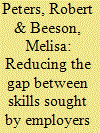| Srl | Item |
| 1 |
ID:
076716


|
|
|
|
|
| Publication |
2006.
|
| Summary/Abstract |
The decisions to abandon the pursuit of nuclear weapons by South Korea and Taiwan represent two of the most important cases of nuclear rollback during the Cold War. The cases differ in significant ways: While Taiwan's rollback emphasized capability reductions, South Korea's nuclear rollback mainly reflected changes in intent. One similarity was that despite their precarious security environment, both reversed their nuclear programs in the face of tremendous U.S. pressure. The United States is likely to remain central to these states' future nuclear narratives to ensure that they do not restart their programs. Changes in the threat environment, shifts in relations with the United States, or the belief that no one is watching could produce worrisome policy shifts in Seoul and Taipei. Several key questions for examination include: Why did they suspend their nuclear weapons programs? What specific pressures influenced rollback? How important was Washington in the process? How significant were the reversals? What could induce them to restart the programs? Understanding Seoul's and Taipei's decision-making is crucial to understanding rollback writ large. Failure to do so may invite an era in which the long-feared "nuclear dominoes" may fall
|
|
|
|
|
|
|
|
|
|
|
|
|
|
|
|
| 2 |
ID:
100838


|
|
|
|
|
| Publication |
2010.
|
| Summary/Abstract |
The process of transforming students from novices into experts relies on active learning and the development of an appreciation for the links among topics. Since rote or stimulus-response learning is preferred by a majority of students who are beginning their programs of study but does not optimize learning and understanding, the first step in the process is changing students' preference to active learning. As students progress from 100- to 400-level courses, this outcome can be accomplished by reducing the amount of class time that instructors dedicate to lectures that introduce new material and increasing the amount of time dedicated to active learning strategies. Because of PowerPoint's linear structure, teachers can foster learning by supplementing traditional slides with tables, charts, graphs, and concept maps that explicate the links among topics. Concept maps also lend themselves to assessing students' mastery of concepts and the value added by class discussions. Both measures enable instructors to enhance their teaching effectiveness and, over time, use class sessions more efficiently.
|
|
|
|
|
|
|
|
|
|
|
|
|
|
|
|